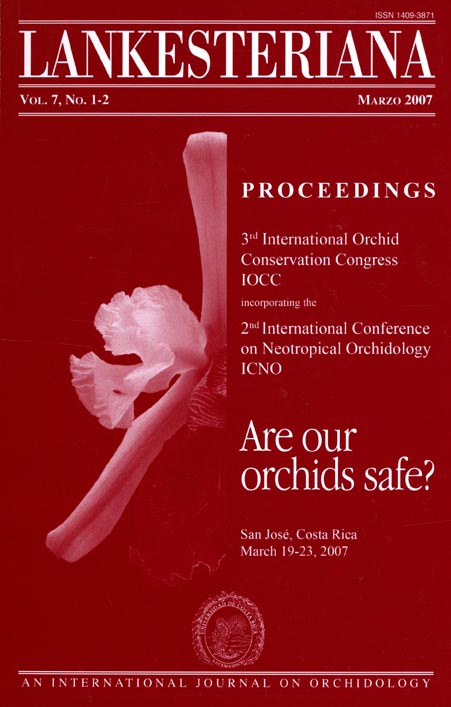Richness, distribution and important areas to preserve Bulbophyllum in the Neotropics
DOI:
https://doi.org/10.15517/lank.v7i1-2.18448Keywords:
Bulbophyllum, Neotropics, richness, complementarity analysis, PAE, orchidAbstract
Bulbophyllum is probably one of the largest genera in the orchids with Pantropical occurence, but the dis- tribution is not homogeneous across the world. The Paleotropics is the richest area and there are hundreds of species in Asia (Vermeulen 1991). The genus was described by Thouars in 1822, and the first Neotropical species was described only in 1838 (B. setigerum Lindl.) from a plant collected in Guayana by George Loddiges and sent to John Lindley. Until today, one hundred and ten species names were pub- lished for the Neotropics, however only ca. 70 species could be recognized in five sections supported by phy- logenetic studies based on nuclear and chloroplast genome sequence data (Smidt unpubl. data).
Downloads
Downloads
Published
How to Cite
Issue
Section
License
According to the Open Access policy promoted by the University of Costa Rica, all the papers published by Lankesteriana are licensed under the Creative Commons copyright and can be downloaded free of charge. The journal holds copyright and publishing rights under the CC BY-NC-ND 3.0 CR license.
Before the publication of the materials submitted by the author(s) in LANKESTERIANA, the author(s) hereby assign all rights in the article to the Lankester Botanical Garden.





